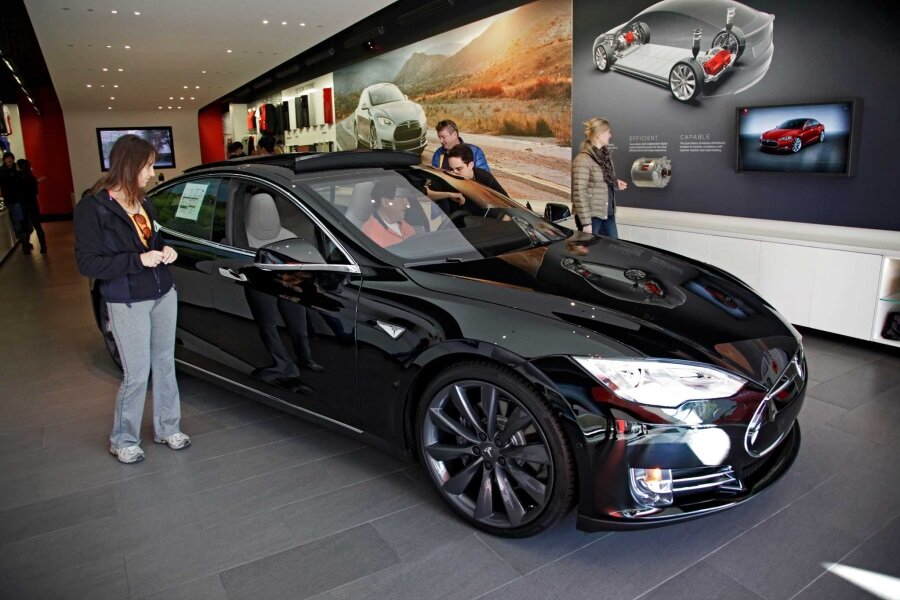Tesla promises solution to 'range anxiety' for Model S electric cars
Loading...
Drivers of electric cars are familiar with “range anxiety” – the feeling that comes when you calculate the distance of a planned trip and realize your car won’t be able to make it the whole way without stopping to recharge.
This is rarely a problem for gasoline cars, of course. Stop at any gas station, spend three minutes filling your tank, and you’re good to go. But electric cars usually take hours to charge, and charging stations are scarce in many areas of the country.
Tesla chief executive officer Elon Musk says his company has a solution for owners of the Model S, Tesla’s most popular electric car. “About to end range anxiety … via OTA [over-the-air] software update. Affects entire Model S fleet,” he tweeted on Sunday.
There are four Model S variants, the least expensive of which can drive 208 miles on a charge, and the most expensive of which can drive 270 miles on a charge. That’s a very large range, especially compared to other electric cars currently on the market, such as the Nissan Leaf, which has a range of less than 100 miles, and the Chevrolet Volt, which has a range of only 52 miles before the gasoline engine kicks in. Still, Tesla wants to be able to convince drivers that its electric cars have enough juice to get them where they need to go, without having to worry about what will happen if their battery dies mid-trip.
Mr. Musk says Tesla will hold a press conference on Thursday morning to announce the solution. That could mean a software update to improve the efficiency of the Model S’s charging. Or it could mean general performance improvements to the cars, allowing them to squeeze more range out of a charge.
As Business Insider transportation editor Matthew DeBord noted, it’s significant that more than 60 percent of the staff at Tesla are devoted to software, compared with just 2 percent at most other car companies. Tesla has an approach that’s more Silicon Valley than Detroit when it comes to addressing problems such as “range anxiety.”
The company is also working to expand its network of Supercharger stations, which allow a Tesla Model S to get between 150 and 200 additional miles of range in 20 to 30 minutes. There are 402 Supercharger stations open today, most of which are located in the US and western Europe. Tesla concentrates the charging stations on major highways such as the corridor from Washington, D.C., to Boston and the highways connecting San Francisco, Los Angeles, and Las Vegas. It’s already possible to drive across the country in a Model S (and Model S owners get to use Supercharger stations for free, for life) but Tesla is working to fill in the gaps in its network so that Model S owners have more options for charging.








